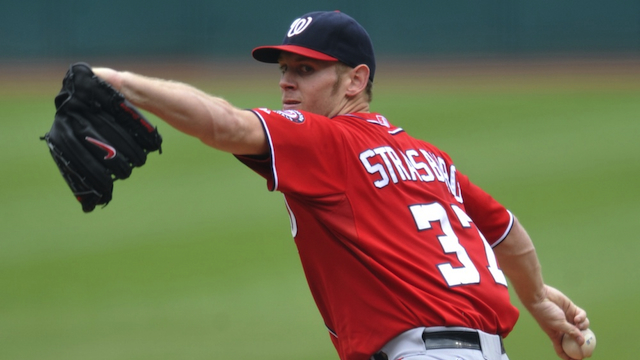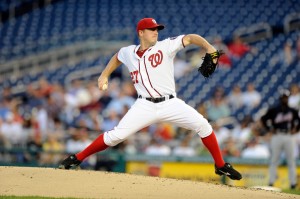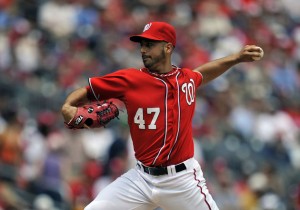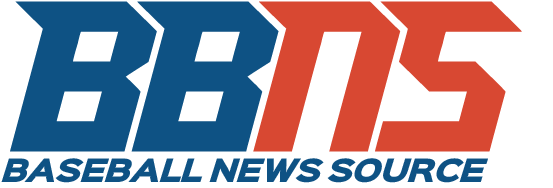 The Washington Nationals had a disappointing 2013 season. After winning a major-league best 98 games in 2012, they missed out on the playoffs. Late season surge notwithstanding, they finished 86-76, ten games back of the Atlanta Braves in the National League East, and four games back of the Cincinnati Reds in the Wild Card hunt.
The Washington Nationals had a disappointing 2013 season. After winning a major-league best 98 games in 2012, they missed out on the playoffs. Late season surge notwithstanding, they finished 86-76, ten games back of the Atlanta Braves in the National League East, and four games back of the Cincinnati Reds in the Wild Card hunt.
However, it would be hard to blame the Nationals starting pitching for the team’s struggles. Even with Dan Haren‘s longball troubles and the inability to establish a No. 5 starter, they finished 8th in the big leagues in fWAR, and 6th in ERA. Jordan Zimmermann, Stephen Strasburg, and Gio Gonzalez all had strong seasons, as each surpassed 3 fWAR.
This offseason, Nationals General Manager Mike Rizzo swung a trade with the Detroit Tigers for Doug Fister. By not giving up any major league talent to acquire one of the game’s best pitchers, the Nats made perhaps the best move of the winter.
1. Strasburg has the best stuff on the team, and you’ll be hard pressed to find a pitcher in the game with a tougher repertoire. He combines a mid to high 90’s fastball with an excellent curveball and one of the game’s best changeups.
Furthermore, he has a career 7.0 percent walk rate. Though his strikeout rate was down in 2013, he induced groundballs at a 51.5 percent rate, a big jump from the previous season. Over the past two seasons, only five pitchers have a lower xFIP-. Steamer projects a 9.9 K/9 and a 2.8 BB/9 for a 2.90 FIP for the 25 year-old flamethrower.
 2. Fister might not have the elite stuff that Strasburg does, but he’s been one of the best 15 pitchers in baseball since 2011.
2. Fister might not have the elite stuff that Strasburg does, but he’s been one of the best 15 pitchers in baseball since 2011.
He’s totaled 13.3 fWAR in that time frame, which sandwiches him between David Price and Cole Hamels.
The tall right-hander has walked just 4.9 percent of hitters since 2011, while striking out 18.2 percent. In addition, he’s a groundball machine, getting batters to put the ball on the ground at a 50.9 percent rate. Steamer projects a 7.3 K/9 with a 1.9 BB/9.
 3. Zimmermann is cut out of the same mold as Fister, though he features a fastball that sits in the low to mid 90’s.
3. Zimmermann is cut out of the same mold as Fister, though he features a fastball that sits in the low to mid 90’s.
Like Fister, he’s walked hitters at a low 4.9 percent rate since 2011 while striking out 18.8 percent.
His ERA in that time is just 3.12, giving him a 12.4 RA-9 WAR that is tied for Fister for the 12th best mark in baseball. The University of Wisconsin-Whitewater product projects for a 7.0 K/9 and a 2.0 BB/9 with a 3.54 FIP.
 4. Gonzalez might walk a few more than his rotation mates, but he’s struck out 23.8 percent of hitters since 2011. In that time, batter have hit just .219 against Gonzalez.
4. Gonzalez might walk a few more than his rotation mates, but he’s struck out 23.8 percent of hitters since 2011. In that time, batter have hit just .219 against Gonzalez.
He does tend to issue too many free passes, and his 9.7 percent walk rate in the last three seasons is the 15th highest in baseball.
With a low 90’s fastball and a good curveball, lefties hit just .200 against Gonzalez in 2013, striking out in 26.8 percent of plate appearances. His 12.7 RA-9 WAR in the last three years is just a shade ahead of Zimmermann and Fister. Steamer projects Gonzalez for an 8.9 K/9 and a 3.4 BB/9 with a 3.37 FIP.
 5. This spot could be something of a wild card for the Nationals. Tanner Roark posted a 1.51 ERA in 14 games and five starts in 2013.
5. This spot could be something of a wild card for the Nationals. Tanner Roark posted a 1.51 ERA in 14 games and five starts in 2013.
However, with a very low 6.0 percent swinging strike rate and a very high 93.4 percent Zone-Contact rate, it’s anyone’s guess as to how long he can keep that up.
Though he should regress some, he appears to at least be a solid swingman. Steamer projects him for a 6.9 K/9 and a 2.7 BB/9 and a 3.67 FIP, good numbers for a fifth starter.
Taylor Jordan, who made nine starts in 2013, is another option. The lanky right-hander had a 57.5 percent groundball rate. While he didn’t strike out many, he had a low 5.0 percent walk rate. He has a good fastball, and his 10.2 percent swinging strike rate along with a decent slider and changeup show potential for a higher strikeout rate. Similar to Roark, Steamer projects him to be a solid back-end starter with a 6.1 K/9, a 2.5 BB/9 and a 3.74 FIP.
Finally, the Nationals could make a big splash. While they haven’t been connected with any of the big free agent starting pitchers on the market, they could make a push.
Also, they could try to swing a deal for David Price, which would make an already formidable rotation downright awe-inspiring. The Tampa Bay Rays would likely ask for second base prospect and likely 2014 starter Anthony Rendon, who the Nats are understandably loath to part with.
More likely, they stay pat and trust that one of Roark and Jordan or a combination of the two can fill out the rotation. With perhaps the best starting pitching in baseball, and a lineup that looks to bounce back from a dismal 2013 season, the Nationals have to be considered the favorites to win the National League East.
